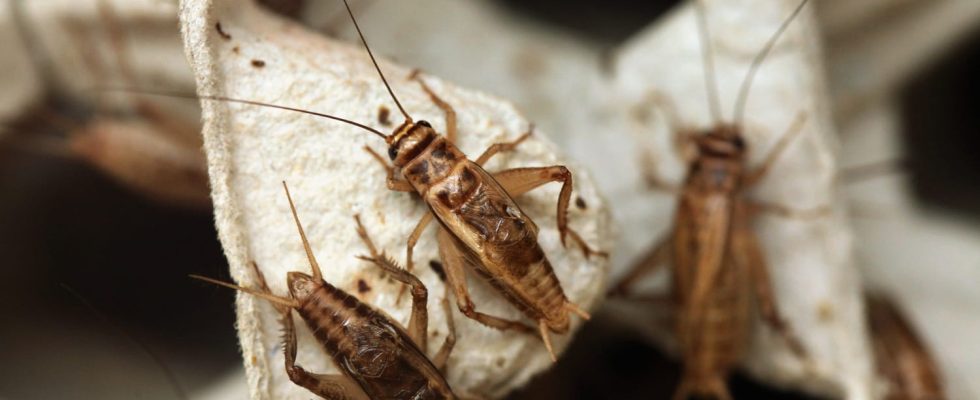The European Commission has authorized the marketing of cricket powder as food. Breads, pizzas, biscuits… This kind of flour can already be slipped as an ingredient in many products, provided it is clearly indicated.
Failing to crunch insects directly, a culinary habit that struggles to seduce the French, will you soon find pizzas, pasta or cookies containing cricket flour on your plates? Yes, if we rely on the latest arbitrations of the European Commission which authorized the marketing of these flours produced from insects… Or rather from domestic crickets since the European authorization, published in January 2023concerns only this kind of insects.
The request comes from a Vietnamese company, Cricket One. The latter obtained this marketing right for a period of 5 years. But, unlike many fanciful publications circulating the web in recent weeks, several conditions have been slipped by Brussels.
The presence of this cricket flour must therefore be clearly indicated on the label. A mandatory mention is even indicated in the document of the European Commission. The products will thus have to display in the list of ingredients affixed to the packaging the following statement : “Acheta domesticus powder (house crickets) partially defatted“.
The list of products concerned by this European authorization has been published… and it is long if we rely on the quantity of food products that may contain this cricket powder. Here is the official list published by the European Commission:
- Multigrain breads and rolls; biscuits and breadsticks,
- Cereal bars,
- Premixes (dry) for baked goods,
- Cookies,
- (Dry) pasta products,
- (Dry) stuffed pasta products,
- sauces,
- processed potato products,
- Dishes made from legumes and vegetables,
- pizza,
- pasta products,
- Powdered whey,
- meat substitutes,
- Soups and concentrates or soup powders,
- Snacks made from corn flour,
- Beer Type Beverages,
- chocolate confectionery,
- Nuts and oilseeds,
- Snacks other than fried potatoes,
- Meat preparations
Particularly regulated doses
The authorization also includes other obligations including the statement “stating that this ingredient may cause allergic reactions in consumers with known allergies to crustaceans, molluscs and products thereof, and house dust mites.“This marketing is only a first step and the doses of cricket flour are thus regulated.
For example, the company will not have to put more than 3 grams of cricket flour for 100 grams of cereal bars and 2 grams in its breads. This first step, symbolic, however, marks an important development as the market for edible insects, a food very rich in protein, is considered one of the food solutions of the 21st century. Thus, one liter of water is enough to produce a kilo of crickets where it takes more than 4000 to obtain a kilo of chicken according to the FAO, the United Nations Food and Agriculture Fund…
